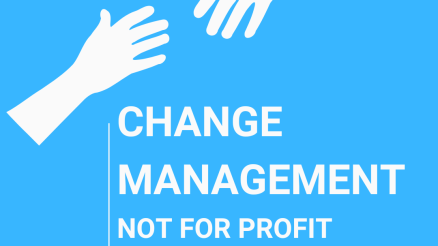Organizational change is the process of implementing organizational initiatives and strategies for improving performance, increasing efficiency, and aligning organizational goals with a changing environment.
It involves organizational restructuring, organizational development activities, and changes in organizational culture and operations.
The goal of organizational change is to create a more successful organization through improved operations, increased profitability, or both.
What is organizational change and when it is needed?
Organizational change it is a process that involves alteration of structures, processes and/or behaviors within an organization. This kind of change generally occurs when the organization faces disruptive market conditions or to help meet strategic goals, so the change will benefit the company in staying competitive or achieving desired targets.
Organizational changes are designed to create an environment where employees understand what is expected of them and what objectives to accomplish, which can help improve work efficiency and morale. Making organizational changes requires courage and hard work, but when done with foresight and clear communication between all stakeholders, it can be one of the most effective methods for optimizing any business’s success.
Organizational change is typically needed when the organization is not performing to its potential, its organizational model isn’t suitable for the current environment, or the organizational culture and values are no longer effective.
The advantages of organizational change
Organizational change can lead to a number of advantages for an organization if implemented correctly. Here are some key advantages of organizational change.
Increased Efficiency
A successful organizational change leads to increased efficiency within an organization. This improved efficiency can come in the form of shorter production times, faster turnaround on customer service inquiries, or reduced overhead costs. This increased efficiency not only increases productivity and reduces costs but also helps organizations adapt to the changing environment in order to stay competitive.
Increased Effectiveness
When an organization undergoes change, it becomes more effective in its ability to achieve its goals. This effectiveness may be due to changes in structure that allow for better division of labor and specialization, the introduction of new processes that improve output quality or quantity, or alterations in organizational culture that make employees more responsive to direction and more productive overall.
Improved Morale
Organizational change can also have a positive impact on employee morale. When employees feel like they are part of something larger than themselves – a team working towards a common goal – their sense of pride and satisfaction with their work increases. In addition, when changes are made in a thoughtful and rational way, employees are less likely to feel anxious or confused about their roles within the company moving forward.
Enhanced Adaptability
The best organizations are adaptable ones; they’re able to quickly respond to disruptions in the market by making the necessary changes in order to stay competitive. A well-planned organizational change can allow an organization to be more nimble in its operations and better equipped to handle any kind of situation that may arise.
Increased Profitability
Organizational change can have a significant impact on an organization’s profitability through improvements in production processes, reduced overhead costs, and organizational structures more efficient for the current environment. Companies that embrace organizational changes will be able to stay ahead of the competition by optimizing their resources, increasing efficiency and productivity, and creating better organizational cultures and values.
Improved Relationships
Organizational change can also lead to improved relationships between employees, between departments, and with customers. When organizational change is implemented in a manner that respects all stakeholders involved, it can lead to improved cooperation and understanding between different organizational levels.
Increased Creativity and Innovation
Organizational change can lead to increased innovation within an organization as well. By changing the organizational structure, introducing new processes and technologies, or altering organizational culture, organizations can create an environment where employees feel comfortable taking risks and coming up with creative solutions.
Improved Internal Communication
When organizational changes are implemented correctly, it can lead to improved communication between employees, departments and organizational levels. Improved communication enables employees to share their ideas more freely and collaborate more effectively on projects. They can share their ideas more freely and have a better understanding of organizational goals.
Increased Diversification
Organizational change can lead to increased diversification in an organization. By introducing new organizational processes or technologies, companies are able to access and explore new markets or partners that would have been previously inaccessible. This can open up a variety of opportunities for the organization, allowing them to tap into different sources of revenue, expand their products or services.
Disadvantages of organizational change
Disadvantages of organizational change can also be numerous, so here is list of some disadvantages of organisational change.
Resistance to Change
Organizational change often encounters resistance from employees or organizational stakeholders, which can slow down or stop the change process altogether. Resistance to organizational change is a normal reaction because individuals may fear the unknown and what they cannot predict. People tend to gravitate towards stability and have difficulty adapting to the unfamiliar; this can lead them to resist organizational change. And if this resistance is not managed properly then it can spoil the entire change initiative.
Change is expensive
Organizational change can be an expensive process, especially if it requires organizational investment in resources such as money, time, and personnel. This organizational investment may include hiring additional staff, purchasing new technology or equipment, or training existing employees. Additionally, organizational change can lead to operational costs related to implementing new processes and procedures.
More Chances of Failure
Research shows that 70% of change initiatives fail due to one reason or other. There is more chances of complete failure of the change effort. Organizational change initiatives can often fail due to various factors. A lack of organizational readiness and commitment, inadequate resources or funding, a lack of clear objectives or strategies, poor communication and coordination between organizational levels, competing organizational interests, and resistance from organizational stakeholders are all common reasons why organizational change efforts fail.
Increased Conflict
Organizational conflict is an inevitable part of organizational change, as organizational stakeholders tend to have different interests or perspectives on how organizational processes and objectives should be achieved. This can manifest itself in a variety of ways, such as disagreements between organizational management and employees over the implementation or outcomes of organizational changes. It can also manifest when organizational stakeholders have different views
Lowered Morale
Organizational change can also have a negative impact on employee morale, particularly if employees feel that their opinions and input were not taken into account during the change process. Employees may also experience a sense of insecurity regarding their roles in the organization and uncertainty about their future prospects.
Unforeseen Consequences
Organizational change may also have unforeseen consequences, such as organizational politics or organizational inefficiencies that were not anticipated during the change process.
Organizational change can be a useful tool for businesses looking to stay competitive and successful; however, it is important to acknowledge the potential drawbacks of organizational change and make sure to consider them when implementing organizational changes.
By understanding the potential risks and benefits associated with organizational change, organizations can ensure that their organizational changes are effective and beneficial in the long run.
How to make the most of organizational change
Organizations often encounter changes due to technology, mergers, new regulations, or increasing customer needs. These changes can have a huge impact on how the organization runs and how employees work on a daily basis.
In order to make the most of organizational change and enable successful adaptation, it is essential to begin with communication and collaboration between relevant teams and employees. A proactive approach works best in addressing these changes while encouraging team members to provide their ideas and feedback.
Additionally, it’s important to create processes that are scalable during these times of transition in order to ensure smooth operations across the company. By taking the right steps now, organizations can take advantage of any organizational change that may come in the future.
Final Words
There are several advantages and disadvantages to instituting organizational change. When done correctly, an organization can experience increased productivity and creativity, improved communication, and a renewed sense of purpose.
However, organizational change can also be disruptive and challenging, causing anxiety and conflict within the company. It’s important to carefully consider all factors before making any decisions about organizational change.
Are you considering implementing changes in your own organization? What advantages and disadvantages do you foresee? We’d love to hear from you in the comments below.



